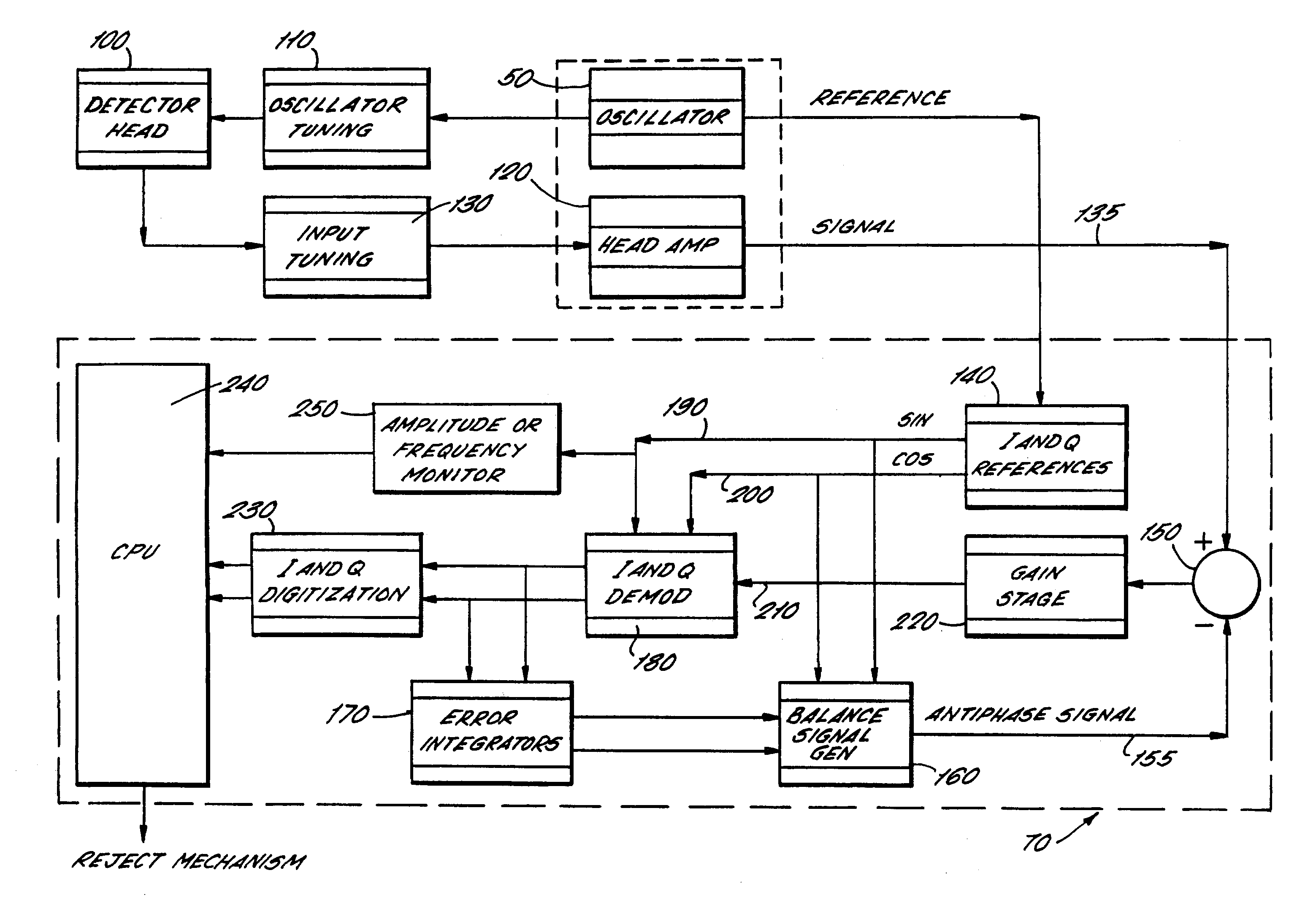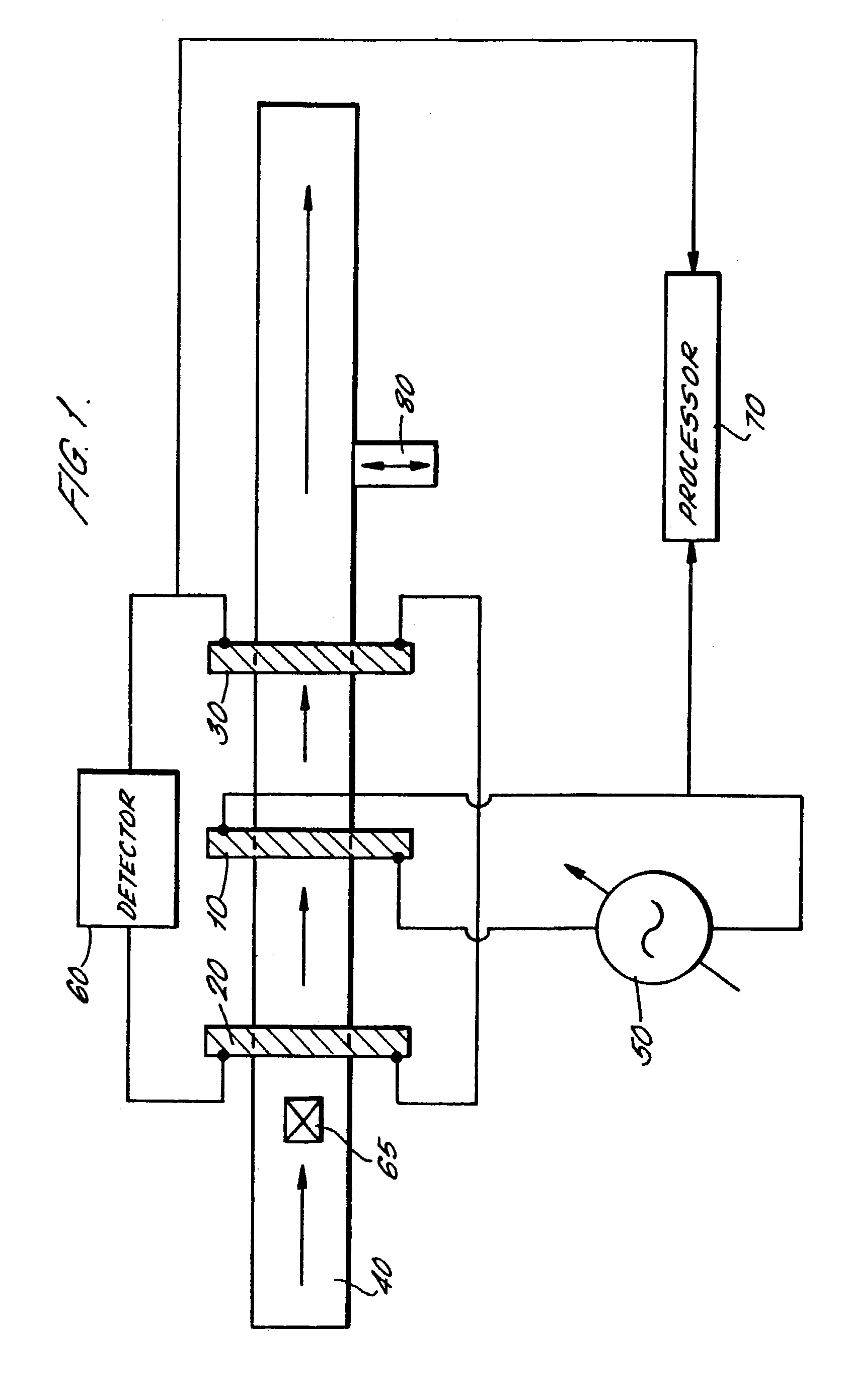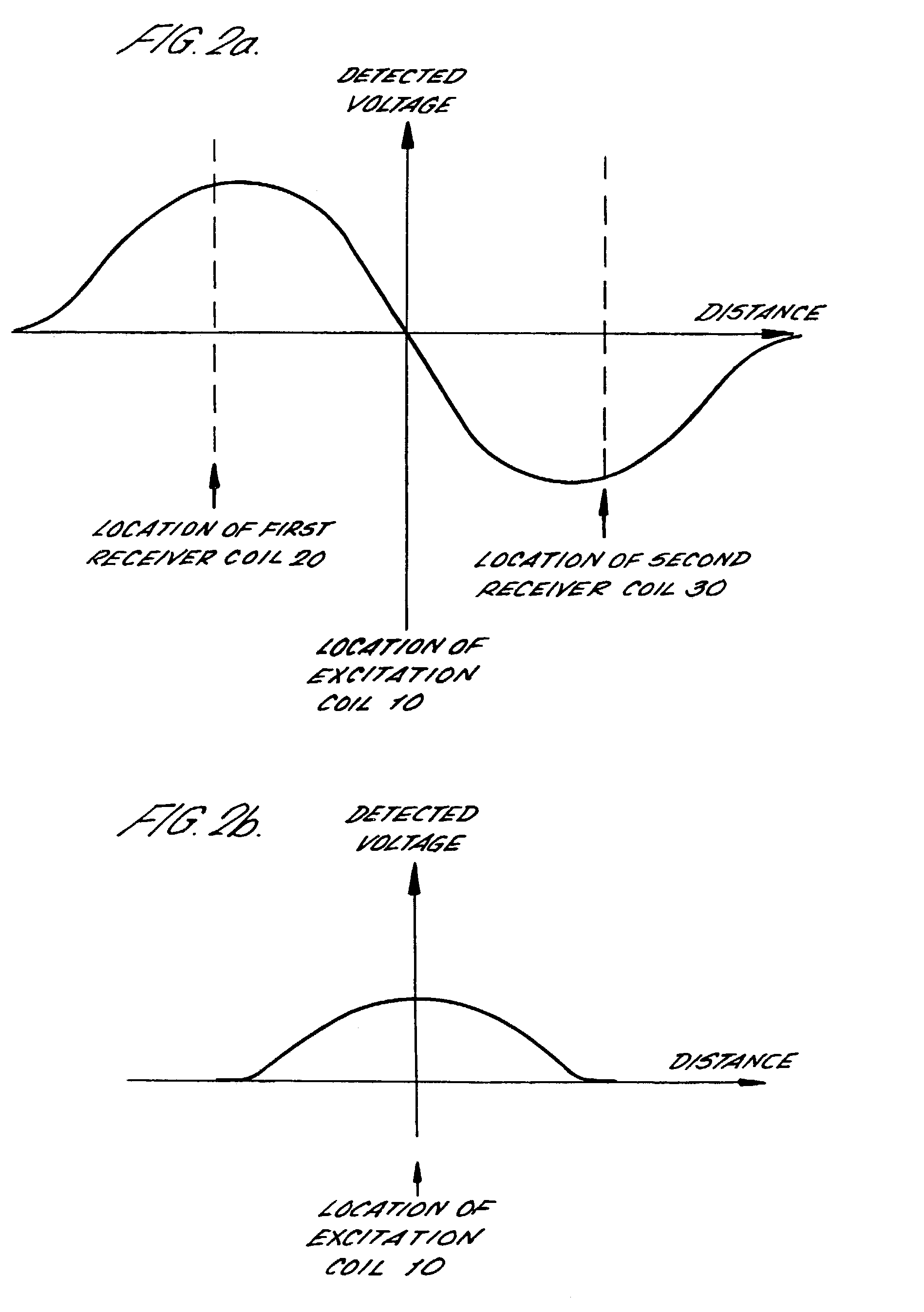Metal detector
a metal detector and detector technology, applied in the field of metal detectors, can solve the problems of residual voltage amplitude, non-zero amplitude generation, electrically conductive and ferromagnetic objects affecting the flux linking the receiver coil, etc., and achieve the effect of reducing the problem of contaminant detection
- Summary
- Abstract
- Description
- Claims
- Application Information
AI Technical Summary
Benefits of technology
Problems solved by technology
Method used
Image
Examples
Embodiment Construction
[0029]FIG. 1 shows a highly schematic plan view of a metal detector embodying the present invention. The metal detector comprises a central excitation coil 10 formed as a loop and arranged between two receiver coils 20, 30. The two receiver coils are also formed as loops. Each of the three coils is typically of similar diameter and the three coils are arranged coaxially with one another. The three coils together will be collectively referred to hereafter as the detector head.
[0030]The excitation coil 10 and the two receiver coils 20, 30 of the detector head surround a conveyor 40 which passes generally along an axis perpendicular with the plane of the loops. In FIG. 1, the conveyor is shown moving left to right so that a first receiver coil 20 is upstream of the excitation coil 10, and a second receiver coil 30 is downstream thereof. It will of course be understood that this arrangement is illustrative of the principles only.
[0031]A highly stable, pure sinewave oscillator 50 having ...
PUM
| Property | Measurement | Unit |
|---|---|---|
| frequency | aaaaa | aaaaa |
| frequency | aaaaa | aaaaa |
| diameter | aaaaa | aaaaa |
Abstract
Description
Claims
Application Information
 Login to View More
Login to View More - R&D
- Intellectual Property
- Life Sciences
- Materials
- Tech Scout
- Unparalleled Data Quality
- Higher Quality Content
- 60% Fewer Hallucinations
Browse by: Latest US Patents, China's latest patents, Technical Efficacy Thesaurus, Application Domain, Technology Topic, Popular Technical Reports.
© 2025 PatSnap. All rights reserved.Legal|Privacy policy|Modern Slavery Act Transparency Statement|Sitemap|About US| Contact US: help@patsnap.com



